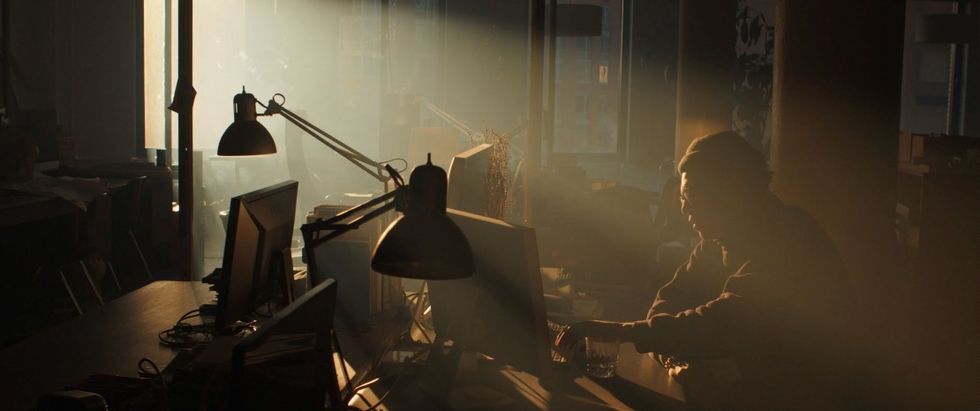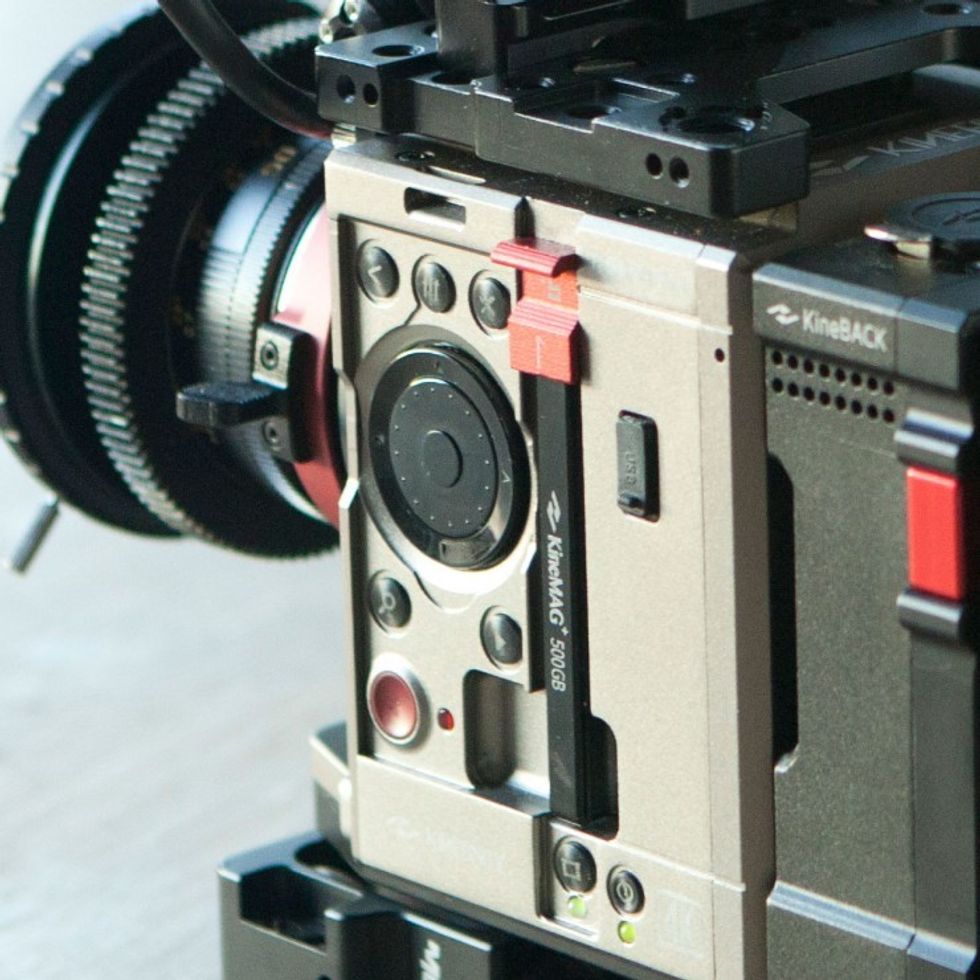REVIEW: The Kinefinity Terra 4K Offers Bang-for-Your-Buck
I was one of the first to test the Kinefinity Terra 4K in the US. Here's what I found.

Buying the Canon 5D Mark II in 2010 was one of the best decisions I’ve made. The DSLR boom changed the camera industry, driving prices down and igniting the prosumer era. And though I went to film school and have even shot projects on Super-16mm film, affordable digital cameras have influenced my creative process in innumerable ways. That being said, It was now past time for me to buy a new camera and I wanted something to use for client work that also had an image quality suitable for shooting a feature film. Oh, and it had to be something I could afford. I chose the Kinefinity Terra 4K. Want to know how the decision worked out?

Over the past few months I’ve shot the “T4K” in tests and in the field, for client and personal work, with support and with my bare hands. I believe I was the first person outside of China to receive one of these cameras. Yup, I’m the guinea pig. Here are some thoughts and footage from the past few months.
Overview
The Kinefinity Terra 4K enters a suddenly crowded sub-$10k cinema camera market and with a spec sheet that dazzles in places; best-in-class slow motion, dual-native ISO, and minimal rolling shutter are the headline features. It also has competitive dynamic range, light weight, and affordable recording media. There are downsides, too: a sub-Super-35mm sensor, for one, and a relatively unknown brand from China with no support options in the West. Confusing matters more, Kinefinity makes a 6K version of the Terra, and the just-announced Mavo, each also under $10K.
I ordered the Pro Pack version of the camera which includes a protective cage, travel case, and XLR/SDI module. The camera feels sturdy in hand for its small size—just a tad bigger than a DSLR. A lightweight with only the handgrip and monitor attached, or it can be built up to fit on the shoulder with a V-mount battery for counter-weight in back.
Operation is intuitive. I was able to get shooting pretty quickly, and read the manual later.
The Nitty Gritty
Video is great for showing footage, but the fixed timing of playback isn’t ideal for small details. Here are several things about the camera that didn’t make the video but are worth mentioning:
Menu
Blackmagic Design has the best camera menu system, hands down. Other brands have functional menus that lack aesthetics. The Terra menu is in the latter camp. One unique feature is that every shot folder contains a text file with information like the ISO and shutter settings. There’s a menu option to customize this file with the production name, camera operator, etc. The default slate items have a mix of upper- and lowercase letters, but once you start customizing you’re in all-caps. A small thing but annoying.
The Terra 4K’s thumbwheel button is a bit too slick and flat. In cold environments when you can barely feel your fingers, a more tacky surface would help. Further, the thumbwheel operation is not always consistent. It can function as a d-pad (up, down, left, right) as on a gaming controller, or in a circular spinning motion like the old iPod wheel. There are times when clicking a direction seems more obvious than scrolling but some menu options don’t allow clicking, only scrolling, which is always confusing.

"No other camera in this price range shoots above 60fps at full-sensor read."
Operation
- Startup time could be faster.
- Switching between frame-rates is fast.
- Nice options for customizing the onscreen guides.
- Low light performance is quite good.
- I’ve experienced several firmware bugs, some covered in the video review. Kinefinity has released two firmware patches in the time since I’ve owned the camera to address issues, and I believe the team is working on others.
- I wish the audio would automatically detect whether a microphone is connected and switch from the internal mic to the audio module. As it stands you have to remember to manually switch via menu every time you add or remove a microphone. Further, the two microphone inputs don’t have independently adjustable levels.
- Full-sensor slow motion is silky-smooth at up to 75fps (and 100fps in widescreen mode) with no visible moiré. No other camera in this price range shoots above 60fps at full-sensor readout.
- The sidegrip takes Sony-type batteries and the camera also receives power from the (optional) KineBack module via V-Mount. This means that you can alternate battery types while shooting and get continuous power.

Camera Build and Body
- The Movcam accessories in the Pro Kit add useful accessories like a top handle and cage protection. But one of the cage bars makes it harder to press the left direction on the sidegrip dial. I know a Terra 6K owner who removed this bar for just that reason.
- The Kinefinity monitor, with its integrated power and monitoring cable, is a good choice for any indoor situation. I use an EVF when shooting outdoors so haven’t had much cause to test it outside.
- The lens mount is positive locking, which ensures a stronger connection than a standard EF mount.

The Image
Dynamic Range. This is a big one. Kinefinity claims 14 stops. I’ve attended one test personally and have seen the results of another online that both peg the dynamic range of the Terra 4K at 12 2/3 stops, more than a stop lower than the manufacturer’s claim. RAW recording has not yet been enabled via firmware update so it’s possible that the addition of RAW will add some more highlight retention, but the camera does not seem to be able to record the claimed 14 stops that were part of my buying decision. This is disappointing. I reached out to Kinefinity for comment and they’ve said that an engineer is investigating the issue.
"It takes very little effort in post for the image to resemble what I imagine."
Perhaps the biggest drawback, covered in the video review as well, is the grid-like flares caused by the Optical Low Pass Filter. A unique flare occurs when shooting point light sources at smaller f-stops. This can be lessened by shooting at wider f-stops or by diffusing light sources, but there are shooting conditions where this problem is unavoidable. Kinefinity has changed the position of the OLPF in models manufactured in 2018, greatly mitigating this effect, so the issue overall may not be as worrisome, but worth mentioning.
In the Feels
There are certain qualities of every camera that are subjective. An image from one manufacturer may look “more cinematic” to one user or “DSLR-ish” to another. There are two hazy categories these remarks often fall under: color science and motion cadence, neither of which we’re able to quantify objectively. Unfortunately, camera specifications only take us so far before these emotional reactions are the only thing left. Just what does the image look like?
Can a camera have a philosophy?
Kinefinity’s focus on flexibility benefits the user in various ways, starting with price. The Terra uses non-proprietary media and accessories, which tend to be cheaper. This philosophy plays out most advantageously in the KineMount, a small marvel of engineering, which allows the camera to mount lenses from a wider array of manufacturers (EF, Nikon, PL, and E mounts available) than any of its competitors.
Media is captured to a ProRes QuickTime file, one of the most versatile formats. (The Terra 4K is one of the cheapest cameras available to offer ProRes recording in 4K). LUTs can be applied in-camera for previewing footage but the file will always be recorded in log, preserving that image flexibility through post. For these reasons, the Terra can fit many workflows and shooting styles. It is light enough to fly on a drone or a gimbal, robust enough to shoot a feature, cheap enough for most filmmakers to afford. It is a chameleon.
And while the Terra’s body design recalls RED Cinema’s box-with-a-lens-mount-attached shape, there are some clever details. The integrated SSD slot is convenient and sleek. The aforementioned lens mount connects to, in my case, an EF mount that includes a focal reducer which boosts exposure and widens the field of view to 1.3x, squarely between full-frame and standard S35. The fit, finish, and placement of the buttons and connectors makes sense in daily use.
And, most importantly, the image looks good.
Though there are some drawbacks I remain excited to own and shoot with this camera. After a recent two-week trip to Norway and France that included several consecutive days of full production, I can report that the camera is reliable in the field.
"The Kinefinity Terra 4K offers a very high bang-for-buck ratio with just a few drawbacks."
TL;DR
Overall, I find the Kinefinity Terra 4K to offer a very high bang-for-buck ratio with just a few drawbacks. This is a $4000 camera that offers 10-bit ProRes, RAW (soon), excellent slow-motion, 4K resolution, minimal rolling shutter, and access to an amazing variety of lenses. When I consider all of those benefits, it feels a little trivial to sit here and complain about the lack of lowercase text in one of the menus.
In the Terra 4K I’ve found a camera that can keep up with me. For now. The only thing left is to go make something with it.
Nearly seven years ago I wrote a series of articles on this website, mainly about the art of directing. In the intervening years I made my first feature film – I was even interviewed about it right here on No Film School. And here I am writing as if I’m a cinematographer! What happened? You’ll have to come back for my next post. In the meantime, I hope you’ll take a look at any camera that catches your eye and that you’ll challenge yourself to improve your craft.



















